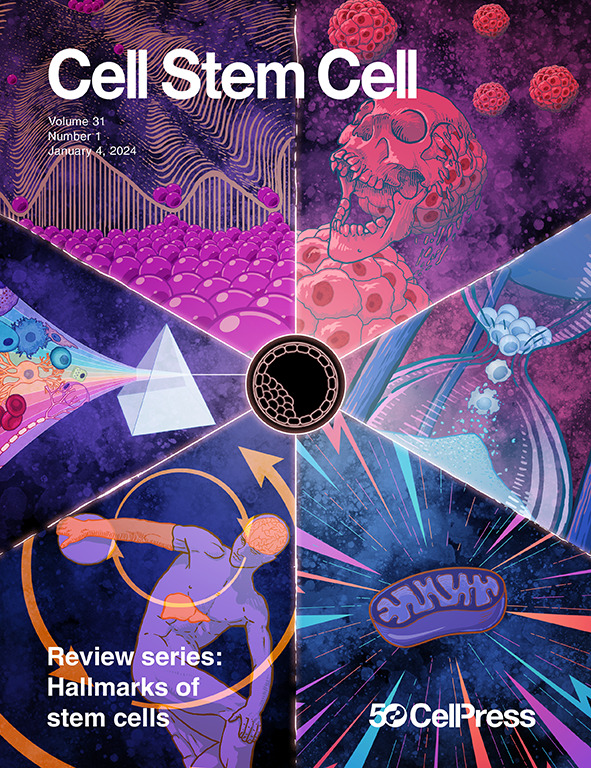塑造肠道类器官:工程隐窝曲率引导干细胞壁龛
IF 20.4
1区 医学
Q1 CELL & TISSUE ENGINEERING
引用次数: 0
摘要
Yavitt等人1介绍了一种可光降解的水凝胶平台来控制肠道类器官的隐窝弯曲,揭示了上皮形态如何指导Paneth细胞定位。这种创新的方法推进了类器官工程,为研究干细胞生态位相互作用和模拟肠道发育和疾病提供了一种可重复的方法。本文章由计算机程序翻译,如有差异,请以英文原文为准。
Shaping intestinal organoids: Engineering crypt curvature to guide stem cell niches
Yavitt et al.1 introduce a photodegradable hydrogel platform to control crypt curvature in intestinal organoids, revealing how epithelial morphology directs Paneth cell localization. This innovative approach advances organoid engineering, providing a reproducible method to study stem cell niche interactions and model intestinal development and disease.
求助全文
通过发布文献求助,成功后即可免费获取论文全文。
去求助
来源期刊

Cell stem cell
生物-细胞生物学
CiteScore
37.10
自引率
2.50%
发文量
151
审稿时长
42 days
期刊介绍:
Cell Stem Cell is a comprehensive journal covering the entire spectrum of stem cell biology. It encompasses various topics, including embryonic stem cells, pluripotency, germline stem cells, tissue-specific stem cells, differentiation, epigenetics, genomics, cancer stem cells, stem cell niches, disease models, nuclear transfer technology, bioengineering, drug discovery, in vivo imaging, therapeutic applications, regenerative medicine, clinical insights, research policies, ethical considerations, and technical innovations. The journal welcomes studies from any model system providing insights into stem cell biology, with a focus on human stem cells. It publishes research reports of significant importance, along with review and analysis articles covering diverse aspects of stem cell research.
 求助内容:
求助内容: 应助结果提醒方式:
应助结果提醒方式:


